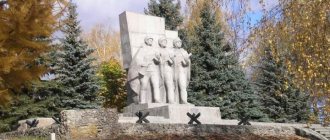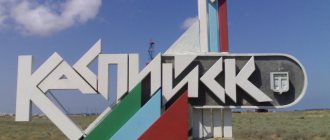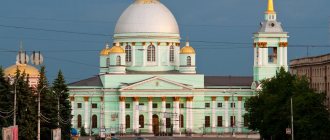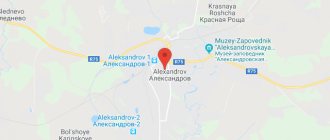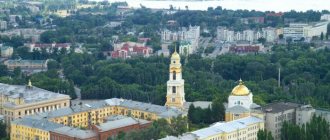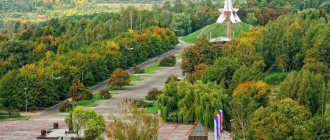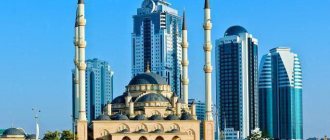History of the creation of the monument
The city of Tula has been a major industrial center since the beginning of the 18th century. Here today there is an arms factory, opened by decree of Peter the Great, as well as large steel and machine-building enterprises. Many city residents work at these facilities, and for them Levsha Leskova is a real national hero. The issue of creating a monument to the Tula literary hero himself was actively discussed in the 80s. After a competition of sculpture sketches, the best option was chosen. And already in 1989, Lefty was cast in bronze at the Tula Mashzavod. The author of the chosen project is the talented sculptor Bronislav Krivokhin. Initially, the monument was installed on the territory of the plant, and it was inaccessible for inspection by tourists and city residents. Almost twenty years later, in May 2009, the administration of the enterprise donated the sculpture to the city and moved it to a city street.
A few facts about Tula
- The city was founded on the banks of the Upa River, first mentioned in 1146.
- Tula is a large industrial, scientific and cultural center, which in 2014 took 3rd place in the All-Russian competition for “The Most Comfortable Urban Settlement in Russia.”
- The city is famous for its heroic defense during the Great Patriotic War. Finding themselves almost completely surrounded, the defenders of Tula did not surrender the city.
- In 1976, Tula was awarded the title of hero city.
- The population of Tula is about 480 thousand people.
- The distance from Tula to Moscow is 180 km, to Kaluga - 110 km, to Serpukhov - 90 km.
Monument to Lefty in Tula: description and photo
Today everyone can see the monument to Lefty. It is located near the territory of the Tulamashzavod, 200 meters from the main building (exact address: Mosina St., 2. It is almost impossible not to notice the monument; the figure of a literary character is installed on an impressive pedestal, lined with red granite. The stone base has the shape of a hexagon, on each face of which quotations from literary works are carved. Lefty is depicted in full growth, in one hand he holds a hammer, and in the other his main work - a savvy flea. Leskov's hero is dressed in simple work clothes and a traditional protective apron, his hair is pulled back from his forehead braid The figure radiates calm, self-confidence and pride.
Tula State Museum of Weapons
Website: https://www.museum-arms.ru
Appeared back in 1873 at an arms factory. Now it is located in 2 buildings at once:
- old - on the territory of the Tula Kremlin;
- new - on Oktyabrskaya street, 2.
The exhibitions of the old museum make it possible to trace the evolution of weapons making and see with your own eyes artifacts from the 16th to the 21st centuries. Among the exhibits are guns that represented the Russian Federation at the World Exhibition in Paris in 1900, awarded the Great Gold Medal, as well as miniature models of weapons.
In the new museum building, the viewer is offered modern multimedia technologies in the presentation of weapons collections: virtual storytellers, holographic display cases and volumetric-spatial compositions. With the help of innovative technologies that create an “immersive effect”, you can immerse yourself in another era.
Portrait likeness or living legend?
The literary Lefty had a very real prototype that inspired the writer to create the story - the real-life Tula master Alexei Surnin. It is unknown what this man looked like; Leskov describes his hero as “slanting” and the owner of a birthmark on his face. The monument to Lefty in Tula is a collective image of a master gunsmith. The bronze figure is quite masculine, with well-developed muscles. Tula Lefty is stocky, but at the same time he looks quite harmonious and impressive.
Memorial complex to the Defenders of the Fatherland's sky
The huge monument, located at the entrance to the city, appeared in 2013. It is dedicated to the pilots of the 141st Red Banner Fighter Regiment of Tula.
The dimensions of the complex are almost 100 meters in diameter and about 30 meters in height. In the center of the monument are German and Soviet aircraft, the scale of which is 1 to 1. Both aerial devices stand on shaped stands that resemble flight trajectories. At the same time, the enemy pilot falls to the ground, and the Soviet pilot rises into the sky. The Eternal Flame is lit in the central part of the memorial complex. The creation of the monument was initiated by public organizations, and about 300 million rubles were spent on its construction.
Kulikovo Field
The historical site of the famous Battle of Kulikovo in 1380 is located in the Kimovsky district of the Tula region, now it is a memorial museum-reserve of federal significance. The objects are dispersed over a fairly large area, but each of them is unique and interesting - the Museum of the Battle of Kulikovo, the Alley of Memory and Unity, the monument to Dmitry Donskoy, as well as the battlefield itself and stunning nature.
Military-historical festivals and battle reconstructions are often held here, which are incredibly interesting to watch.
MUSEUM AND MEMORIAL TO THE HEROES OF THE BATTLE OF KULIKOVO
Address:
Tula region, Kimovsky district, village. Monastyrshchino
Coordinates:
53.667944, 38.640861
MEMORIAL ON RED HILL
Address:
Tula region, Kurkinsky district,
Coordinates:
53.606072, 38.671801
MUSEUM OF THE BATTLE OF KULIKOVO
Address:
Tula region, Kurkinsky district, Mokhovoye village
Coordinates:
53.623503, 38.671730
Singing fountain
There are several singing fountains in the city, but the largest of them is located on Lenin Street, near the Gostiny Dvor shopping center. During the summer, he performs every day from 12:00 to 23:00. He doesn't play only on rainy days.
While the fountain is running, various melodies are heard, including Vivaldi's "The Four Seasons" and Freddie Mercury's "The Show Must Go On." The spectacle is accompanied by colorful lighting.
Tula embankment
The city of Tula stands on the Upa River, and the pedestrian “Kazanskaya” embankment runs along it. It got its name from the Church of the Kazan Mother of God, which is located nearby. Improvement of the embankment began only in 2021, when the city bought the area near the river. In 2021, on the occasion of City Day, its opening took place.
Now it is a quiet place for walks and relaxation: with gazebos and benches, playgrounds for children, grounds for table tennis, basketball, hockey and football, as well as bicycle paths. There are viewing platforms and performance areas. A project is being developed to plant a lilac garden, launch rental of bicycles, boats, an open-air cinema, and in winter - the construction of slides and an ice skating rink in the riverbed.
Tula Kremlin
Address: TulaKremlin.rf
Its history begins in 1507, when Vasily III decided to build an oak fortress (fortress) here. In 1509, construction was completed. In 1520 (21) a “stone city” appeared in a wooden fortress. The Kremlin has seen many events over the years of its existence. For example, in 1605, False Dmitry I found refuge here, and in 1607, Ivan Bolotnikov.
In 1930, dilapidated buildings in the Kremlin were demolished. Since the 1960s, comprehensive restoration work has been carried out in the ancient fortress to restore its original appearance. Since 2021, large-scale preparations have been underway for the celebration of the 500th anniversary of the Tula Kremlin, which is scheduled for 2021.
Exhibition Center
In 2021, one of the Kremlin premises was equipped into an “Exhibition Center”; at the moment it includes 4 museums:
- military history;
- folk art;
- samovars and Tula gingerbread;
- history of the Tula Kremlin.
In addition to this, the exhibition hall hosts exhibitions, forums, conferences and business meetings.
Armored train No. 13 Tula worker
At 4 Puteyskaya Street, there is a reminder of the heroic defense of the city during the Second World War. In 1941, when Nazi troops were advancing on Moscow, Tula railway workers created a unique armored train.
Now it has recreated the atmosphere of war times, in which machine guns, racks with live ammunition, and a cannon are installed. At the base of the division there is a club car, a bakery car and a headquarters car. With the help of the exhibits you can understand what the life of soldiers was like during the Great Patriotic War.
Holy Assumption Cathedral
The exact date of construction of the church is unknown, but it is listed in the “Extracts from the built Tula books” (1649). Initially, in the first years of its existence, the church of the Assumption Convent stood on this site. It was rebuilt due to dilapidation and renamed more than once. In 1898, the church was completely dismantled, down to its very foundations, and a completely new two-story building was erected in its place, which was consecrated in 1902. It is made in neo-Russian style from dark red brick with matte black domes and massive crosses. The church is popularly nicknamed “black” for the color of its domes.
After the revolution, the church was closed, and the State Archive of the Tula Region was located in the temple building. During this time, all the walls of the fence and the bell tower collapsed, but inside the church the paintings of the 20th century by artists who studied with Nesterov and Vasnetsov were well preserved.
In 2006, the partially restored premises were returned to the Tula diocese, and services began. In 2012, the cathedral was fully opened, including for believers.
Yasnaya Polyana
The place where the great Russian writer Leo Tolstoy lived, worked and was buried. A park, several houses, outbuildings and, of course, the residential estate of the legendary prose writer. This estate, by the way, became the prototype of the family estate of Prince Bolkonsky from the novel “War and Peace”. The territory of the estate is a wonderful place for walks in the atmosphere of Tolstoy’s times, which has been perfectly preserved through the efforts of the descendants of the famous writer.
Address:
Tula region, Shchekinsky district, Yasnaya Polyana village
Coordinates:
54.072414, 37.529322

